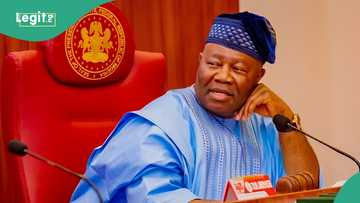Weaponising NYSC: How Nigeria Is Punishing Youth Dissent and Fuelling a 2027 Crisis
Editor’s note: In this piece, Lekan Olayiwola follows the trail from a disputed NYSC decision to the hidden spaces where youth resistance now thrives. The policy analyst shows how today’s grievances are evolving in ways that could shape Nigeria’s politics far beyond 2027.
In August 2025, the National Youth Service Corps (NYSC) withheld the certificate of corps member Ushie Rita Uguamaye, sparking national outrage. While NYSC claimed the decision was based on procedural infractions, civil society groups and legal experts, including Femi Falana, argued that the move was politically motivated in response to her online criticism of government policy.

Source: Twitter
The seizure of NYSC certificates, arrests of youth influencers, and prolonged detentions without trial are becoming more frequent. These actions are not just punitive; they are corrosive.
Across Nigeria, a new form of youth-led unrest is mutating not just in the streets, but in digital shadows, rural enclaves, and urban flashpoints. This isn’t an episodic protest. It’s a generational rejection of institutional relevance. And it’s happening faster than politicians can track.
A Nigeria map of civic disruption
Recent data from Nigeria’s Youth Activities Dashboard shows a surge in youth-led initiatives. But beneath the surface, a parallel civic ecosystem is emerging that government metrics fail to capture.
In the Niger Delta, youth militancy is resurging, fuelled by broken amnesty promises and environmental collapse. WhatsApp groups now serve as coordination hubs for sabotage and resistance.
In Lagos and Abuja, flash protests and police clashes are increasingly organized through TikTok and X, where meme-based dissent has become a form of cultural insurgency.
In North central Nigeria, farmer-herder clashes are being live streamed by youth activists, turning local grievances into national flashpoints.
Meanwhile, in the Southeast, Telegram channels are amplifying secessionist narratives among disenfranchised youth.
Even in the rural North, where digital access is limited, youth banditry and vigilante justice are escalating — a sign that unrest is no longer confined to urban centres.
This is not a map of protest. It’s a map of mutation.
What leaders haven’t suspected
The nature of unrest in Nigeria has fundamentally changed. It is no longer centralized or ideologically uniform. It is networked, fluid, and increasingly decentralized. Digital platforms are not just amplifiers; they are organizing tools. Youth are not waiting for inclusion; they are building parallel civic legitimacy.

Source: Twitter
Environmental collapse, particularly in the Niger Delta, is acting as a key driver. Oil spills have destroyed livelihoods, and the absence of remediation has radicalized entire communities.
Traditional peacebuilding tools such as youth panels, stakeholder forums, and government outreach are seen as performative. The result is a widening gap between institutional intent and civic reality.
Digital crackdowns and its political cost
In recent years, Nigeria’s approach to digital dissent has shifted from passive monitoring to active suppression. Under the Cybercrimes (Prohibition, Prevention, etc.) Act of 2015, cyberstalking and online harassment are criminalised — a necessary step to protect vulnerable users.
But in practice, these laws have increasingly been weaponised to silence criticism, punish satire, and criminalise civic expression. What began as a framework for digital safety has morphed into a tool for institutional overreach.
The consequences are already visible. Youth are adapting. They are migrating to encrypted platforms like Telegram, using satire and coded language to evade detection, and building decentralized networks of resistance.
But this adaptation comes at a cost. The more the state cracks down, the more youth disengage from formal institutions. Trust erodes. Dialogue collapses. And the civic space shrinks.
The social cost is profound. By 2027, Nigeria risks a generation of young people who see the state not as a partner, but as an adversary. The political cost is even greater: digital repression breeds radicalization, not compliance. It pushes dissent underground, where it becomes harder to track, harder to engage, and harder to resolve.
If Nigeria continues down this path, it won’t just lose its youth. It may lose the possibility of a peaceful transition.
Early warning signals
There are clear signs that Nigeria is approaching a tipping point. In Bayelsa and Delta states, youth-led sabotage is rising, directly tied to failed government promises.
In Lagos and Abuja, online activism is shifting from protest to coordinated civic disobedience.

Source: Twitter
Young women in rural areas, facing compounded exclusion, are quietly resisting through community organizing and digital storytelling. Across platforms, memes and satire are being used to delegitimize institutions — not as jokes, but as strategic tools of dissent.
These are not isolated incidents. They are signals of systemic failure.
Nigeria in global context
Around the world, government neglect has triggered similar civic mutations. In Kenya, Gen Z-led protests over tax hikes forced cabinet reshuffles and policy reversals. In Chile, youth mobilization over inequality led to a constitutional overhaul. In France, pension reforms sparked riots and decentralized urban unrest.
India’s farm law protests, driven by rural youth, resulted in nationwide demonstrations and eventual policy reversal. The Aral Sea disaster in Central Asia remains a haunting example of environmental neglect leading to irreversible collapse. And in South Africa, economic inequality and corruption fuelled looting and institutional erosion.
In each case, youth were not just participants; they were catalysts. They used digital tools to organize, educate, and pressure governments. They reimagined civic engagement. And they exposed the limits of traditional governance.
Why this matters for Nigeria
Nigeria’s trajectory mirrors these global cases but with higher demographic pressure, weaker institutions, and more complex regional dynamics. Over 60% of the population is under 34, yet youth remain structurally excluded from governance and economic opportunity. The mutation of unrest from protest to civic disconnection is not just a possibility. It is already underway.
Institutions must act with urgency and imagination. First, they must map the unrest with dashboards, overlaying youth initiatives with conflict hotspots.
Second, they must fund peace entrepreneurs, scaling grassroots efforts that equip youth with conflict resolution and civic agency.
Third, inclusion must be rewired. Token youth representation is no longer enough. Shared governance models, where youth co-create policy and hold real decision-making power, are essential.
Fourth, digital engagement must be prioritized. Platforms that allow youth to shape policy, not just comment on it, can rebuild trust.
Finally, the narrative must shift. Youth are not threats. They are co-authors of Nigeria’s future.
Nigeria’s youth are not just protesting. They are mutating the civic DNA of the country. If institutions don’t evolve, they won’t just lose legitimacy. They’ll lose relevance.
Lekan Olayiwola is a public-facing peace & conflict researcher/policy analyst focused on leadership, ethics, governance, and political legitimacy in fragile states.
Disclaimer: The views and opinions expressed here are those of the author and do not necessarily reflect the official policy or position of Legit.ng.
Source: Legit.ng








